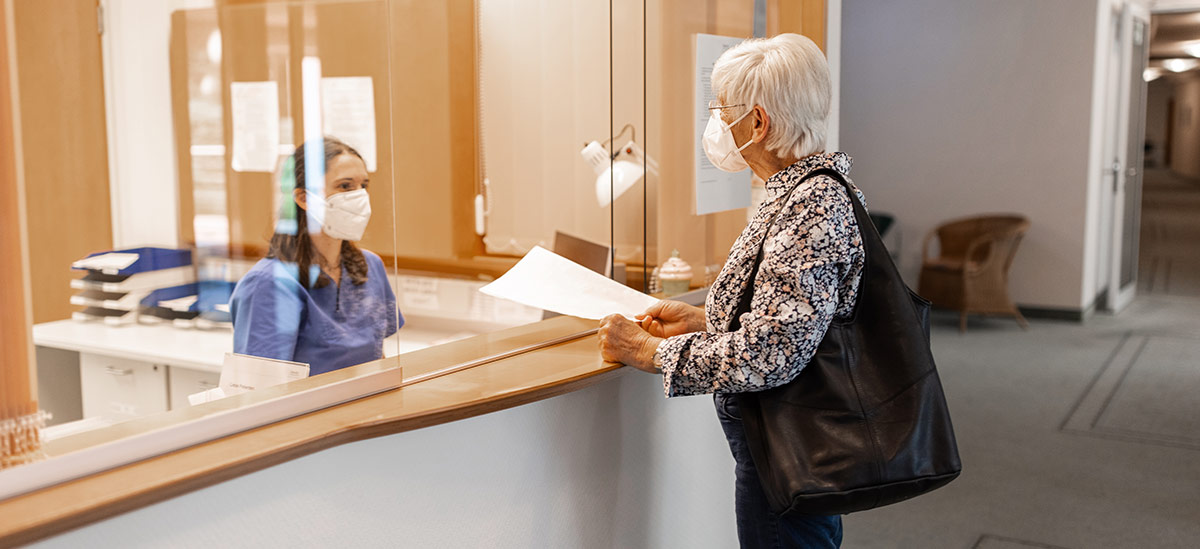
For better or worse, the pandemic changed the way that many of us do business. This is especially true for healthcare practices, many of which were tasked with quickly shifting their business models while keeping their patients’ health and safety at the forefront. While many of those changes were necessary — and some may have even been for the better — the fact remains that, on average, physician practices saw[1] their revenue decline by 55 percent since the beginning of the COVID-19 pandemic, with patient volume falling by 60 percent.
Patients will hopefully start to feel more comfortable heading back to the doctor’s office now that more people are getting vaccinated. Still, whether your practice is small, midsize or large, now is a good time to check in on those areas of the business that you altered during the pandemic, and to reevaluate what worked and what could go.
The Change: Virtual Appointments
The convenience of providing virtual appointments at your practice can’t be overstated, and patients took notice during the pandemic. In one survey, 60 percent of in-person patients preferred a virtual encounter, and 86 percent of virtual patients wanted their future visits to remain virtual[2]. Whether or not you decide to keep virtual appointments as an option will be a personal decision, but aside from the patients’ seemingly strong feelings about it, consider the time that it saves practice physicians running back and forth between rooms, as well as the environmental factors, like less cars on the road and less pollution.
The Change: Increased Online Offerings
Virtual appointments might have been one of the biggest changes to come about during the pandemic, but physicians found additional ways to increase the ease for their patients with even more online options. This turned out to be a good thing, since a lot of patients seem to prefer being able to use their mobile devices to interact with their doctors. According to one survey,[3] 32 percent of patients prefer online appointment booking (up from 27 percent in 2018), 68 percent of patients say they’re more likely to choose medical providers that offer the ability to book, change or cancel appointments online, and more than half of Millennials and Gen Xers say they would switch providers for the ability to book appointments online. This is also potentially good news for practices, since 52.2 percent of practices spend at least 10 hours a week scheduling and confirming appointments and returning patient calls and emails.
The Change: Drive-Through Testing and Vaccination Sites
Providing drive-through testing and vaccination sites for people was born more of a need to stop the spread of COVID-19 than it was to provide convenience, but it turns out that it does both. Especially for a population that might find it difficult to get to a doctor’s office, this type of distributed care — which provides certain types of healthcare needs in places like pharmacies and stores, workplaces and even parking lots — again makes it easier to bring healthcare directly to the people where they are. Providing these services may also allow physicians to scale back on some overhead costs by doing things like reducing office hours and spending less on expensive medical facility costs.
The Change: Employee Shifts
The pandemic also helped those within the healthcare system realize just how vital certain non-physician roles are. Physician assistants, nurses and nurse practitioners all played a pivotal role in keeping Americans safe during the COVID-19 crisis. If you were forced to lay off physicians during the pandemic because of budgetary constraints, it might be worth evaluating whether you really need as many medical practitioners on payroll as you had before. Hiring more non-physician professionals can help you keep payroll costs low, while still providing patients with a maximum level of care.
The Change: Providing Additional Support for Frontline Workers
During the height of the pandemic, it only made sense that hospital workers receive additional employer support through things like childcare, transportation and medical screening. Still, the financial results of providing this additional care to workers can’t be overlooked. In fact, the American Hospital Association estimated the cost of support for front-line hospital workers in COVID-19 hotspots to be approximately $550 million per month.[4] Scaling back on some of these options — including things like an increase in personal protective equipment costs — will hopefully occur seamlessly as we move farther down the road towards lessening the pandemic impact.
The Change: Socially Distanced Waiting Rooms
At the peak of the pandemic, physicians were forced to scale way back on the number of patients they had in their waiting rooms at any given time. This led to a decrease in visits overall to comply with social distancing mandates. Revisiting this strategy — by doing things like allowing more people to visit during certain hours if they have proof of vaccination — down the road may help bring in more business to healthcare practices.
For many physicians, working through the COVID-19 pandemic was unlike anything they’ve ever encountered in their lives. To work in a healthcare practice during this time meant incorporating several changes in order to keep both employees and patients safe. While some of these changes may have been for the better, reevaluating what worked and what didn’t, and making some small changes moving forward, can help you boost your bottom line.





